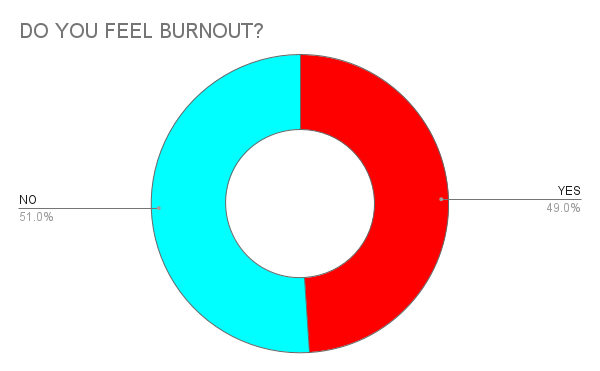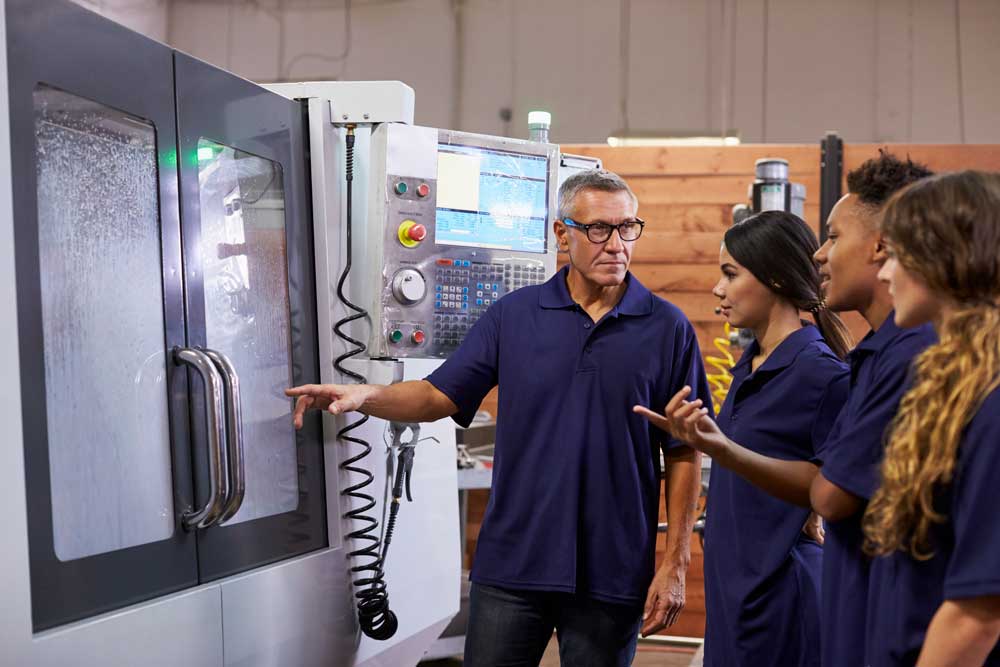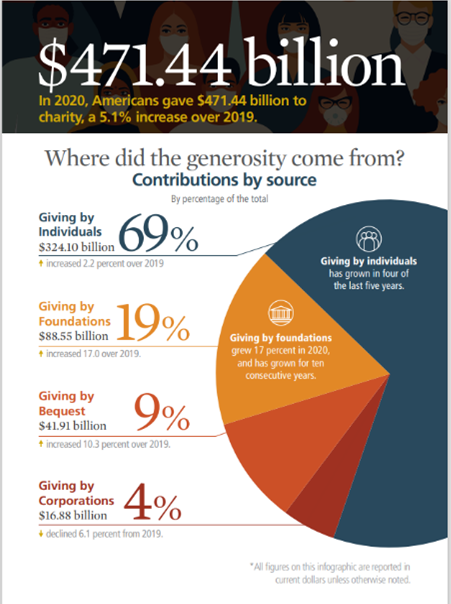Discover how Michigan employers tackle workforce hardship with living wages, flexible schedules, and emergency savings to boost retention and engagement.
Continue readingGen X’s Secret Blueprint to Break Free from Full‑Time Work: Phased Retirement
Retirement today no longer means a sudden exit at age 65 with nothing on the calendar except golf. Many Gen Xers and younger Boomers view a hard stop as financially unwise and personally unfulfilling. Phased retirement offers an alternative path: a gradual reduction in work hours that combines continued earnings, ongoing benefits and meaningful engagement. This model provides a gentler transition for employees and helps employers retain critical skills.
Continue readingWhy is American Manufacturing Surging? Unpacking the 2024 Boom
Discover how U.S. manufacturing’s surprising growth is shaping the future, driving innovation, and setting global economic trends.
Continue readingFeeling The Burn(out)
Your efforts to be fully staffed are being fought on two fronts. The first is trying to fill your open positions. The second is keeping the employees you’ve already hired. With nearly everyone short-staffed, chances are your existing staff is working harder and longer to get the job done. Overworked workers are picking up a lot of the slack and they are suffering from burnout.
According to the World Health Organization, burnout is a syndrome resulting from workplace stress that has not been successfully managed. Companies without systems to support the well-being of their employees have higher turnover, lower productivity, and higher healthcare costs, according to the American Psychological Association (APA). Another study by the APA claims that burned-out employees are 2.6 times as likely to be actively seeking a different job, 63% more likely to take a sick day, and 23% more likely to visit the emergency room. These numbers show burnout is a terrible enemy to your success at work.
A thousand workers were surveyed by Ipsos in early April of 2022 and the studies amplify what many managers already know: this pace of burnout is not sustainable. These charts show what is causing burnout, and what employees think would help alleviate the problem.



Burnout is being felt most by women with 52% reporting feeling burnt out.. Demographically, the highest number of those suffering from burnout remains among young workers where 53% of those aged 18-34 have started to feel the effects of burnout. These employees are prone to leave their jobs in the next 12 months, a 33% increase from August of 2021.
You get it. Everyone’s exhausted from the last couple of years. Their basic needs aren’t being met and they’re losing balance between work and everyday life. So what can you do? The Ipsos survey asked their respondents “what would help ease your burnout?”
About 70% of those surveyed said that a four-day workweek would help. Flexibility and working from home are also highly sought-after job benefits. Some businesses may be able to offer those to their employees, but many of those benefits would require a logistics reshuffling of epic proportions by most companies. Short of some of these lofty goals, there are a few things you can do right now to try and minimize burnout with your staff.
Extra breaks – Even giving an employee a couple of extra fifteen-minute breaks through the course of a week can go a long way. It shows that you are an empathic employer by giving employees a few extra mental health breaks throughout the week.
Ask the right questions – Start with smaller departments and ask, ‘If I could wave a magic wand and make your jobs easier, what would that look like?” This should help you figure out priorities of what needs to be done first to improve your staff’s workload. Employees shouldn’t be expected to have all the solutions, but they can tell you what is not working, and that can be invaluable. Don’t make assumptions. Have in-person conversations.

Solving Little Problems – Tiny little things that go wrong at work wear people down. One day, there’s coffee in the break room or the vending machine is full and the next day it is not. Burnout happens when presupposed features in our day-to-day work lives are missing or taken away. Maybe the company has spent money on something the employees didn’t ask for or even use. Employees could view such an action as impractical, a waste of money, and a poor reflection of the organization. Satisfaction and dissatisfaction are not on a continuum with one increasing as the other diminishes but are instead independent of each other. It’s important to look at each independently and work to keep the little things running smoothly.
Empathy – If an employee is missing quotas, deadlines aren’t being met, seems to be in a bad mood, or starts coming in late–it all may be signs of burnout. Keep in mind that people can have burnout in their private lives as well. That can carry over into work. Don’t assume that there isn’t burnout just because things aren’t busy at work and don’t take it personally that the work environment is leading to burnout.
Access to Resources – Burnout can cause a lot of health problems, both physical and mental. It’s important to make sure your team is connected to resources. Hopefully, you have wellness programs in place that can help your staff work out burnout issues. You should have a list of external sources that can provide support in mental and physical health. Encourage employees that are feeling burnout to utilize these services.

Take Care of Yourself – If you’re a manager feeling burnout yourself, it can be contagious. Setting a positive example of how to manage burnout can help your team understand how to deal with their own struggles. It’s ok for you to be vulnerable too. Managers are not superhuman. It’s ok to let the team know you feel the same issues as they do. Take a mental health day and let your team know it. Here’s some advice on how to deal with burnout as a manager.
The best way to stop burnout is to get in front of it. Implementing some of these action items and tips along with focusing on keeping workloads balanced can minimize the effects of burnout and create a stronger bond with your staff and improve your company culture.
Is The Great Resignation Over?
Projections for the 2022 unemployment rate are holding steady and experts predict we will be back at pre-pandemic employment levels by midsummer. Better than expected job growth is showing signs the labor market is doing well so far in March. So we’re asking, is “The Great Resignation” over?
You’ve heard that phrase, “The Great Resignation” nonstop for the last year. Anthony Klotz, an organizational psychologist and professor at Texas A&M University, coined the phrase during an interview with Bloomberg last May to describe the wave of people quitting their jobs due to the ongoing coronavirus pandemic, which led many to re-think where, how and why we work. The movement itself was a repudiation of the status quo.

Americans quit jobs at a record pace during the second half of 2021. About 23% of employees will seek new jobs in 2022, while 9% have already secured a new position, according to a December ResumeBuilder.com poll of 1,250 American workers. Market losses, supply chain issues, high fuel prices, inflation, heartbreaking world affairs, and yes, still Covid-19, mean business growth is stymied for a bit and hiring may slow down sooner than later.
Turnover may be slowing down due to another factor: you. Companies have answered the call to compete for workers by raising wages, improving benefits, and creating a better work culture. Anthony Klotz says this will keep employee turnover from being “completely rampant” in the months ahead.

This chart tells an easy story. Hiring was off the charts last spring, and in the months that followed, separations grew to an all-time high. But separations have leveled off, especially in correlation to hires, in consecutive months as we headed into 2022.
A survey by The Muse points to a statistic that a large majority of those who resigned, are regretting their decision. The survey asked about 2500 workers, who identify as Millenial or Gen-Z, and found that roughly seven in ten workers found their new roles were different from what they expected when they interviewed for their current position.
About one in five job seekers even admitted they would quit within a month if it’s not as expected, and 41% say they would give it between two and six months. Just under half of job seekers — 48% — would actually try to get their old job back, according to the data. Older generations might have stuck with a job a couple of years to avoid seeming unstable, but now 80% of Gen-Z said it’s acceptable to leave a new job before six months if it doesn’t live up to your expectations. The Muse CEO, Kathryn Minshew calls this quick turnaround in a job Shift-Shock.
The above chart breaks down quit rates by age.The gold and blue lines represent Gen-Z. Green is Millenial and Gen-X. The yellow line represents Baby-Boomers. Is it over? Was it hype? No and no. The worst may be behind us, but if 80% of Gen-Z say it’s ok to dump out of a job from the get-go, we might be seeing another surge of The Great Resignation later this year.
Now is the time to keep your employees energized and engaged in your operation. Minshew advises, “Companies need to be more upfront about the reality of their jobs because it could help retain workers who aren’t totally satisfied but could be over time. People are much more likely to accept the good and the bad and to show up as engaged and productive if they have entered the situation with their eyes wide open,” she said.
Some simple ways to keep your new employees engaged:
- Social Functions
- Stay Interviews
- Work Perks
- Flexibility over their own schedule
- Improve any toxic-related areas of work culture
- Evaluate managers who will be dealing with new employees directly
The Society of Human Resource Management suggests employees who experience shift shock are less likely to be engaged or to become high performers. So, ask new employees on a regular basis how they are doing in their new position. Ask, “What’s your favorite and least favorite thing about working here?” Let them be transparent and open. Ask them to keep a work diary if you feel it could give the hiring team some insight as to what the job is versus how it was described to the employee.

As we return to a version of normal, try to have in-person interviews. It allows potential employees to walk into the building and see what they’re getting into so they get a feel of the energy and culture of your operation. Also, during interviews, don’t let your HR Managers talk only about the upsides of a job. The more transparent you are, the more new employees will be able to deal with adversity and have their expectations managed.
Do not show any resentment for paying higher salaries. Inflation is hard on everyone, and it may seem like you’re paying more for less than you used to get. Employees can see when an employer doesn’t think they’re earning their paycheck. If that happens, they’re likely out the door sooner than later. Give new employees time to acclimate and grow into their roles.
The numbers show The Great Resignation was real and is winding down. Now is an opportunity to soften the landing for those who participated and prevent a second wave of shift-shock that could happen later in the year.
Careers In Less Than A Year
If you’re looking for ways to expand your skill set and grow in your manufacturing career, many of WSI’s assignments offer opportunities for growth. From GED courses to career development courses, the more you invest in a company with your time, the more they invest in you.
If you’re looking for new opportunities, there are several jobs and trades you can learn in a very short amount of time. These skills don’t take thousands of dollars and years of study. Most can be accomplished within a year.

HVAC Technician
Job: HVAC techs install, repair, and maintain heating and cooling units for commercial and home use. The Bureau of Labor Statistics projects that the jobs in this sector will grow by 4% by 2029. In as little as six months, you can complete HVAC training and begin working in this industry. There’s a lot of great benefits to join.
Training: HVAC training is fast, normally taking between 6 months to 1 year to complete a certificate or diploma program. Associate degrees in HVAC technology take a little longer to earn but earning one may get you a higher paying entry level job. HVAC technicians get extensive in-job training, especially when they are at entry-level.
Annual Avg Salary: Ziprecruiter says the average annual pay for an Entry Level HVAC Technician Job in the US is $35,322 a year.

IT Cable Installer
Job: Network cabling specialists set up and repair low-voltage communication systems. They install and service the lines that support Internet, telephone, cable television, security systems, and satellite television services for a building.
Training: There’s a lot of specialized online courses to choose from. This is one of the fastest trades to train for. You can find network cabling programs that are only 24 weeks long.
Annual Avg Salary: Salary.com states that the average hourly wage for a Network Cable Installer in the United States is $27 as of February 25, 2022, but the salary range typically falls between $24 and $32.

Welding
Job: With your certification or associates degree in welding, you will qualify for a wide variety of welding related jobs in manufacturing, automation, construction, inspection and maintenance industries.
Training: Welding training ranges between 7 months and 2 years of hands-on instruction, depending on the program you choose. Usually there are no prerequisites and you’ll be in demand upon graduation. Grand Rapids Community College has a program that provides all the training and certifications you need to get started and at low cost. There are many more just like in this program in close proximity to most cities.
Annual Avg Salary: According to Salary.com, the average Welder I salary in the United States is $42,996 as of February 25, 2022, but the range typically falls between $38,185 and $49,422. Salary ranges can vary widely depending on many important factors, including education, certifications, additional skills, the number of years you have spent in your profession.

Forklift
Job: If you’re looking for a quick skill to add to give you more opportunities in manufacturing, getting your forklift certification is quick, cost effective, and will have you ready to move whatever needs to be moved on the floor in no time.
Training: You can earn your forklift operator certification by taking an OSHA-approved course either in person or online. Many people choose to attend training in person through a vocational school or a local company. These low cost courses include classroom work, a written test and hands-on training and evaluation.
Annual Avg Salary: The average salary for a forklift operator is $16.31 per hour in Michigan and $5,250 overtime per year. That works out to about $40,000 a year.

Automotive Technology
Job: With an automotive technical certificate, students can prepare for employment as an automotive service technician in various settings such as automobile dealerships, independent service facilities, franchised repair facilities, and specialty shops.
Training: Here’s a one-year program for example, offered by Southwestern Michigan College.
You’ll train to be a certified, full-service mechanic with an automotive degree or certificate.
Annual Avg Salary: Automotive dealerships usually have a very robust benefits package in addition to rising pay. The average annual hourly wage was $24 an hour for entry level technicians. And of course, you’ll be invested in constantly for updated training by your employer.

CDL Truck Driver
Job: CDL truck drivers are the lifeblood of the economy. Companies are working with legislatures to ease the burden on truckers. Perhaps even paying them by the hour instead of the mile.
Training: If you’re willing to take a full-time training course that runs 5 days a week, you can obtain your license and be ready for a trucking job in as few as 3-6 weeks. The duration of your CDL program is not measured in days, but rather by hours of training. So the pace may differ depending on class schedules, and your own. You can get an CDL at age 18, but companies won’t hire you until you’re 21 and able to cross state lines and carry all types of cargo. Here’s a list of steps to take to obtain your professional CDL license.
Annual Average Salary: The average hourly wage for a Truck Driver – Heavy in the United States is $22 according to salary.com, but the range typically falls between $20 and $26.
If you’re on assignment with us, our first suggestion if you’re simply looking to add more money to your check is to ask your supervisor what skills would be needed to advance your career, and does the company offer that opportunity? We love to watch our clients grow with dedicated associates that are a great fit. We also love to see our associates grow and find the careers and opportunities that help them thrive and that they are passionate about. Remember, you’re a year or less away from a whole new trade and a bigger paycheck. In this hot job market, it’s your skills and dependability that set you apart. Good luck!
Building Your Best Resume For The Future
WSI never requires a resume for an application for employment. Our online application process is very simple to use. But, if you’re looking to build a resume to highlight your qualifications and experience to go for that dream job you’ve always wanted, we’ve put together some tips and information to help you navigate through building a resume. A customized up-to-date resume will let potential employers know what you can do specifically for them. The purpose of a well crafted resume is to get the job interview.
Our internal numbers here at WSI show that about half of our associates have a resume. Of that 50%, our hiring managers report that almost 80% of them are out of date. Again, this doesn’t hinder anyone from getting an interview for a position they’re qualified for. Taking a couple of hours and updating your resume is like having an ace in the hole for when you need it.
Some people say, “If I’m applying online, I just have to input my resume line-by-line anyway.” Yes, some jobs on Indeed.com will take you to an employer’s website where you’ll have to input all the information by hand. This can be infuriating! Thankfully, WSI’s job page has just five fields, and that’s it.
Other openings could have software that scans your resume and fills in the blanks for you. Then there are jobs where you can attach your resume and write a cover letter and push “APPLY NOW” and that’s the end of it. But what happens to your application after you push send?
Applicant Tracking Software
Writing a good resume means making sure your resume has key words and phrases that you see in the job description. Most employers will use software that sorts and ranks resumes based on qualifications set up by the hiring manager. So, it’s important to make tiny changes to every resume you send to match the job description and requirements. It could be the difference whether or not you’re called for an interview. If there are other candidates who’s keywords are a better match, they will rank higher for the job. Here’s an example of a job opening we have for a position here at WSI, with some keywords highlighted.
Notice how many times “communication” was mentioned? Account Management was also mentioned a couple of times in the job description. These keywords are the skills and talents the employer is looking for. So customize your resume to work in some words and terms you see in the job description.
If you want to see how well your resume stacks up against a job description, use this Simulator. It will scan your resume and the job description you copy over and see how well your resume stacks up against the system.
Best Practices for Creating Resumes
Make sure your headline lets the employer know you meet the requirements of the job description. A summary is how you benefited your previous employer. For example, if you worked at a restaurant, you might highlight your customer service experience. A solid headline and summary example would be:
Headline: Customer success professional with 2+ years experience delighting clients in the retail industry.
Summary: Experienced in resolving client concerns via chat, email and phone; routinely recognized by management and peers for assertive and enthusiastic spirit. Excited to continue my career in eCommerce.
Keep your formatting simple.
Be aware that the software may struggle to read and parse the correct information from your resume and misplace your skills and details that you want to put front and center. Don’t use headers, columns, or footers when you create the document.
Here’s the rundown for sections on your resume:
- Name and contact information
- Summary or objective
- Professional history (Company name | Dates of tenure |Description of role and achievements)
- Education
- Skills
- Optional (Awards & Achievements, Hobbies & Interests)
This template is an example Indeed uses for simple formatting.
Be sure to use simple, professional fonts such as Arial, Calibri or Georgia at a 10–12 point font size. In short, keep formatting simple. Make sure each section is labeled clearly:
- Work History
- Work Experience
- Experience
- Professional History
- Professional Experience
Be Honest With Your Skills, Experience, and Education
Aside from creative job titles, if you mash together job ad keywords and your experience in an attempt to make yourself look more impressive, it could very likely backfire. It’s best to be honest with your skills and not embellish your previous roles. Employers want to see how you contributed to the company. When you write your resume, make every effort to highlight these employer benefits.
HR managers are notoriously detail-oriented creatures who do a lot more background work than they are given credit for. If you say you hold a bachelors degree and you don’t, or were a manager at your last job, and you weren’t…that’s going to raise some serious red flags about who you are as a candidate.
If you were a cashier at your last job, say you were a cashier/customer service specialist. No need to over-fancy a title as an attempt to stand out. Being honest, like in any relationship, is the best foundation for success.
Finish Your Efforts With a Well-Crafted Cover Letter
Nothing personalizes your resume like a well crafted cover letter. The key to writing effective cover letters is to succinctly communicate how your professional experience fits the needs of the role and culture of the company. A great cover letter shows the employer you are interested in the job. Some studies are showing that the cover letter isn’t necessary anymore. But employers are still looking for it as part of your application package.
- Don’t use a generic letter.
- Be sure to include the employer’s name, and the position. If you can call to ask who might be in charge of hiring for the position, put their name on the cover letter.
- Your first paragraph should highlight why you are the specific candidate for the job.
Remember, WSI does not require a resume for application. Even if you’re happy in your current role, it’s always good housekeeping to make sure your resume is up-to-date. You’ll want to make it as readily available as possible if you stumble across that position you’ve always dreamed about. If you don’t have a resume, it’s time to put one together so you don’t miss out on great opportunities. If you don’t have access to a computer to craft a resume, start with your local library. You’ll find many librarians are eager to help you navigate how to use the computer. Below is a list of resources you can use to help you in the process. Good luck out there!
More Resume Building Resources
Making Day One The ‘Best Day Ever’
Temporary associates sound off on their job placements and how they are treated differently.
The American Staffing Association says that there are more than 3 million temporary and contract workers working for staffing companies in America during an average week and 17 million during a typical year.
Both sides of the employer-employee relationship can feel trepidation about one another. Both sides go in hoping they are a good fit for one another. The early days of an associates assignment are crucial in reducing your turnover, and engaging them to strive to be hired-in for full time employment.

Pulling back the curtain here at WSI, some of the common complaints we receive from our associates is that they were treated poorly by supervisors, didn’t feel like they received adequate training, didn’t have a voice in the operations and issues that arose during their shift, or felt like they are treated differently because they are on a temporary assignment.
I’ve learned that people will forget what you said, people will forget what you did, but people will never forget how you made them feel.
Maya Angelou
How does this negatively impact your business?
Many associate workers have long felt that they’re treated as second-class citizens in some workplaces. Your business has a responsibility to everyone who comes to work for you each day, whether they are full-time employees or temporary workers. Morale and employee relations problems can arise when you have temps working alongside permanent employees for months, doing the same work and putting in the same hours, but not receiving the same benefits afforded their permanent employee coworkers. Your regular employees might look down on those working as temporary associates as “outsiders,” or simply not talk to them or mix with them at lunch or office functions.
If an associate worker on assignment has negative feelings about their workplace early in their assignment, what are the chances they see the assignment through? How much desire will they have to become a full-time employee in your operation? What are the long-term effects to your culture and reputation when new employees have a negative experience working for you?
Get Into Their Heads-In a Good Way!
The psychological aspect of managing employees is habitually lost on large scale employers. Making an associate feel like part of the team improves their output. Acknowledgement of their issues, ideas, and concerns helps validate them as an employee and makes them feel pride in being a part of your operation.

Easy ways to do this include remembering their name right off the bat, asking top-level questions about the employee (where they grew up, family at home, etc) and what they like. How can you prepare them for a terrific first day? Who’s going to show them around and who are you asking to have lunch with them to make them feel welcome from the start? An associate who feels seen and that their new employer is making a small effort to treat them like the ‘family company’ everyone always boasts about in their job descriptions will make you stand out from this being ‘just another job.’
Keep Them Safe

Studies show that the frequency and severity rates of on-the-job injuries are significantly higher with temporary workers. Never assume an associate is fully prepared to work unsupervised until you have taken the time to see that they can safely perform their work tasks. It’s not just the dangers of the job. Many employees are going to be eager to prove themselves and could open themselves up to injury or harm moving too fast or without caution. With potential legal liability, it is best practice to ensure that all workers undergo a basic orientation safety training as well as issues such as discrimination and harassment.
Show Them the Way

Most of WSI’s clients love to hire hard-working, dependable associates as full-time employees usually well before the minimum hours-worked threshold is even met for the assignment. Supervisors and team leaders can be on the front lines not only to train workers on temporary assignment, but to also motivate and coach them to get to the finish line and become full-time employees.
If a temporary associate can see the way forward, feels that they’re already part of your team, and their concerns and ideas are validated by their supervisors, why would they not give your company their loyalty and best effort? Coach your staff to treat temp workers as equals, and you’ll likely see your requests for temporary assignment workers drop sharply over the long run because you’ve hired them all to your team.
Spotlight on Black Business – Huey D’s Goodies
To honor Black History Month, WSI is shining a spotlight on a locally-owned black business. We’re proud to introduce to you Huey D’s Goodies, led by CEO Demargeo White. From humble roots, Demargeo is working hard to achieve his dream. We had a chance to sit down and ask Demargeo some questions about his start, his cheesecakes, and the struggle the black small business owners face.

How Did Huey D’s Goodies get started and where does the name come from?
What influenced me to start Huey D’s I was in the food industry for ten years working under chefs, and feeling like I wasn’t getting the recognition I deserved. So, when I moved back home from Grand Rapids, I ended up doing my own thing. I started off doing meal prep, desserts, and catering private dinners. But I found myself getting spread real real thin and buying a bunch of stuff I didn’t need. So I sat down with my wife, and said I wanted to do something different. The reason I chose cheesecakes is because I was terrible at it. The name Huey D’s Goodies come from our son, Houston. Before he was born, my wife named him Houston, and his nickname is Huey, and his middle name is Deandre. I chose ‘Goodies” because I didn’t want to put myself in a box. I’ve been in the food industry for the last twelve years and as the company grows, we’re going to be introducing more products.
You said you were terrible at Cheesecakes at first. Somehow that’s improved because your speciality now are those famous scrumptious cheesecakes. What makes a great cheesecake?
What makes the perfect cheesecake? It starts with love. If you’re not cooking with love, then why are you cooking? One of my top sellers is Strawberry Crunch, a fan favorite. Cookies and Cream, Turtle… I think the Superman is making its way to the top. You can’t get that flavor here, locally. I did my research and the closest you can get a Superman Cheesecake is Detroit. So, me doing it here, I am saving you two hours drive. You can get it right here in town.

What do you hope people take away from Black History Month?
What I hope people take away from Black History Month is that our black excellence goes beyond slavery and goes beyond Black History Month. No shade to the people who came before us. We had black entrepreneurs to this day who are creating history. We bring more to the table than basketball and hip hop music. Our excellence goes way beyond that.
What are some of the other black-owned businesses in the area people should know about?
Some of the other black-owned businesses here in Kalamazoo? I’m going to be biased, because I’m in the food industry. There’s Pop’s Gut, Twine Urban Winery, Jarell McKinney, he does an awesome seafood boil. One of my associates, Sayber Cloud, she’s from Muskegon. She does meal prep, home-cooked meals for families. There’s a lot of hidden talent here in Kalamazoo if you know about it.
What are some of the struggles of owning a black-owned business that people might now be aware of?
Some of the challenges of being a black business owner: we don’t have access to a lot of resources like funding, grants, mentorship. That’s the area we don’t have access to. I tell people, you have to get out here and network and ask questions to access those resources. That’s the best advice I can give to black entrepreneurs. Network, get out and ask questions.
You’re known for giving back to the community. What are some organizations Huey D’s Goodies partners with?
Some of the organizations Huey D’s work around town like Men of Purpose, which I’m actually a chairman of. We pretty much focus on mentoring young black men in the community to help them from boyhood to adulthood. Another non-profit we work with is Mothers of Hope. Whenever I have goodies to donate, I call up one of the members and ask if they mind taking them. Also Young Kings and Queens as well. I try to do my best giving back because I want to set an example for the rest of the community. Just because you’re a business owner, in a certain position, you don’t’ ever want to look down on the little people. Never forget where you come from. I always want to give back.
If you could go back to the beginning just a few years back, what advice would you give yourself?
If I could go back in time and give myself advice in the beginning: definitely do your research. I kind of hopped in head-first. I took off pretty fast and crashed just as fast. As the months went on, I did my research, met with people, networked. I learned a lot along the way. But if I could go back, I’d say research. Look for, try to tap into some grants early on. It took me about a year early on to get my hands on some grants.

How do people find your delicious cheesecakes?
If you’re looking to order a cheesecake from us, you can find us at our website, https://hueydsgoodies.net/, also on Facebook. The Harding’s on 9th and Stadium in Kalamazoo sells our cheesecakes by the slice. You can download our app and order in the Google Play Store and order within minutes!
Best Tips for Business Donations to Charity
Your business can create a simple act of kindness that benefits the community and helps your brand build goodwill. Corporate philanthropy is the act of a corporation or business promoting the welfare of others, generally through charitable donations of funds or time. Donating to nonprofits helps the charity of course, but the impacts of giving to charity and how it helps your community and your business are invaluable.
Sadly, contributions by U.S. companies fell 6.1% in 2020 to $16.66 Billion (a decline of 7.3% when adjusted for inflation) during the pandemic, while individual donations increased. This is largely blamed on the economics of the pandemic in 2020, as personal savings rates skyrocketed, while corporate profits were down 5.1% in 2020.

On average, corporations donate less than 1% of their profits to charity. American Express and The Chronicle of Philanthropy recently conducted a study that found small companies donate an average of 6% of their profits each year. American households donated 2-3% of their income to charities over the same period. Many would like to see corporations increase their donations to match what the typical American gives each year.

WHY DOES MY BUSINESS NEED TO STEP UP?
A study from the Chronicle of Philanthropy says declining levels of trust among Americans for most institutions and each other may also contribute to the move away from charitable giving. Most of the distrust lies along the same division lines in American society today. That mistrust is especially pronounced among Gen-Z and millennials, which could cause another layer of challenges for charitable organizations. An example of this would be Saint Jude’s Children’s Research Hospital, which raised $2 billion in 2020, making it the third most contributed charity in the United States. Yet, only half of what St. Jude raised over the last five years went to research or patient care. Thirty percent went to cover fundraising costs. Allocations like these cast doubt in donors’ minds about the true impact of their gift.
How much money Americans make also plays into the reduction in charitable donations. Four out of five households with an income of $200,000 or more contributed to a nonprofit. On the opposite end of the spectrum, less than three in five households with an income of $50,000 made a charitable donation in 2020.
In addition to helping fill in the gaps for your local nonprofits, there are other benefits for your business including building goodwill in your local community, improving the morale and company culture of your organization, promoting charities that match your values as a company, and building up your network.

WHERE DO I START WITH CHARITABLE GIVING?
Volunteer: Instead of a monetary donation, companies can donate their time to a great cause. Volunteer as a company at a soup kitchen, charity run or homeless shelter. With volunteer support initiatives, companies partner their employees with nonprofits to provide specialized support only that company can provide.
Sponsor a sports team: Youth organizations are always looking for businesses to sponsor their teams. Donate funds towards field upkeep and uniforms. Companies that sponsor teams can have their names displayed on uniforms or field signs.
Launch a charity drive: Start a collection for a particular cause. Your company can collect non-perishable food items for distribution at food banks. Toy drives are popular around the holidays.
Technical Assistance: Do you operate with professionals who could donate their skills and time to help non profit organizations get a leg up on technology, web and IT services, or graphic design. You can’t claim this as a deduction, but it’s an invaluable donation to many groups.
Donate online: Set up automatic donations through virtual giving platforms. Donors that set up some sort of recurring monthly donation give 42% more than one-time givers, claims Nonprofit Source. You could even leave out a collection jar at your place of business and cash in the collected amount to send through an online portal.
Create A Giving Culture: Collective participation in philanthropy engages employees with each other. Companies with engaged employees who enjoy their jobs outperform companies with disengaged workers by up to 202%! You can match employee contributions to their favorite charities. Employee grant stipends are also a way to not only encourage giving, but to create an added benefit to employees and their well being. An example is The Coca-Cola Company, which offers a $20,000 employee matching opportunity, and Walmart, who provides $250 to employees for 25 volunteer hours.

WHAT CAN I DEDUCT?
Studies show that donating to nonprofit organizations just to get a tax break are few and far between. Business deductions for charitable contributions may be limited, and the deductions may only be deductible for the individual owners rather than the business itself. Every business type, with the exception of traditional C corporations, pays taxes as a “pass-through” entity. This means the business’s taxes are passed along to the company’s individual owners.
The IRS website reads, “In general, contributions to charitable organizations may be deducted up to 50% of adjusted gross income computed without regard to net operating loss carrybacks.” New laws now permit C corporations to apply an increased corporate limit of 25% of taxable income for charitable cash contributions made to eligible charities during calendar year 2021. The increased limit is not automatic. C corporations must choose the increased corporate limit on a contribution-by-contribution basis.
It’s important to start by verifying whether you can claim a deduction for a donation to a charity. In order to claim as a deduction, only donations to 501(c)(3) organizations qualify, and a donation to an individual person or any other 501(c) designated non-profit is typically not tax-deductible.

If donating to a new charity this year, be sure to ask to see the business’s letter from the IRS that designates them as a tax-exempt organization. You can also search using the IRS Exempt Organizations Select Check online tool to verify whether the charity is or is not eligible for a deduction.
Don’t make it so that you’re donating to receive a benefit of any type (e.g.. donations to a raffle don’t qualify because you could win a prize in return). As mentioned above, you can’t create a donation based on time and services provided and your meal and entertainment expenses don’t qualify.
You can only deduct mileage if you were not traveling to the destination for any other reason. You cannot deduct your time or the time of your employees who are volunteering for a charitable organization. Gifts and/or donations to political parties, organizations, candidates, or particular individuals, are not recognized as tax-deductible by the IRS.
Do not take this as professional tax advice. It’s not a bad idea to speak with financial experts for advice on how to donate to charity in a way that makes sense for your business.











